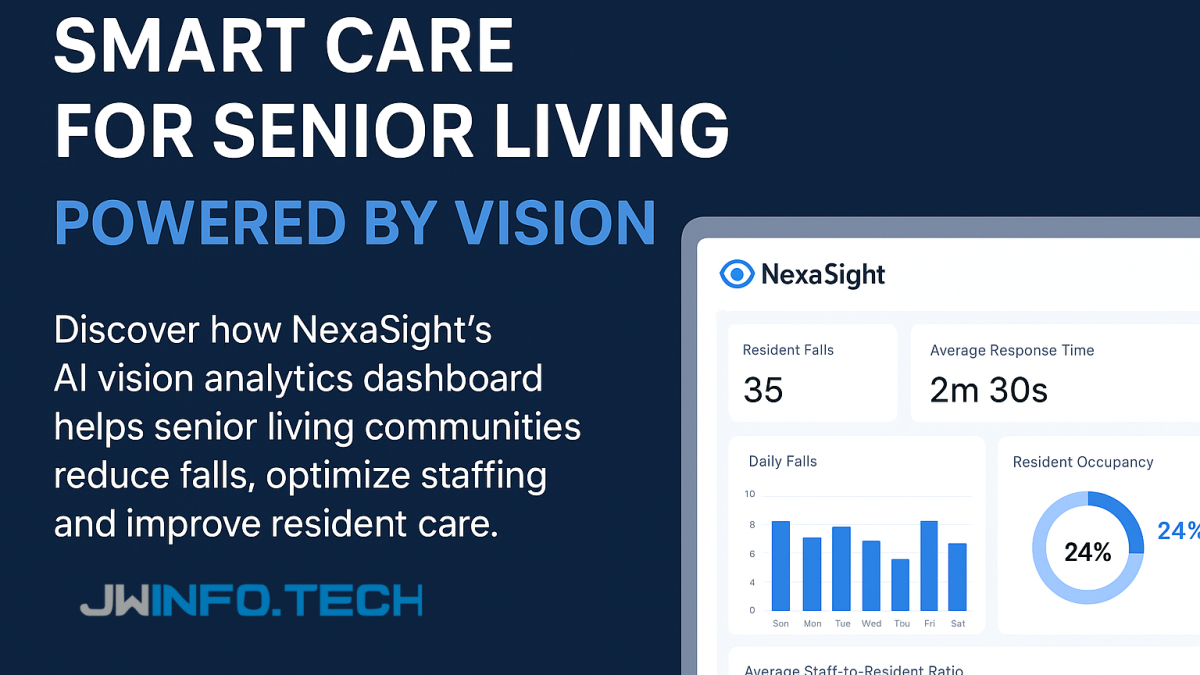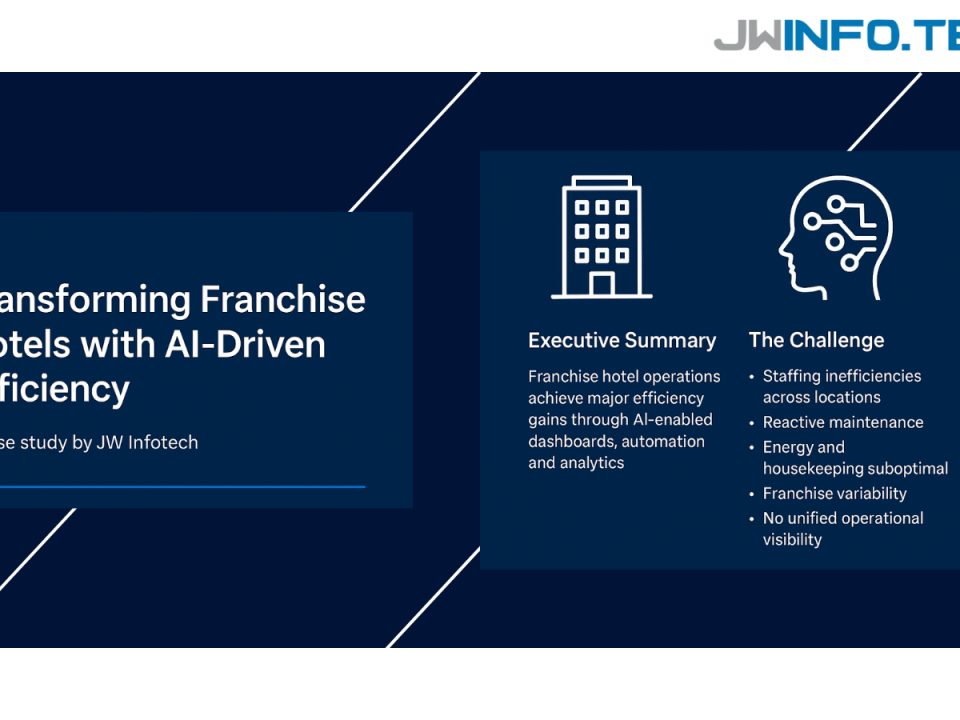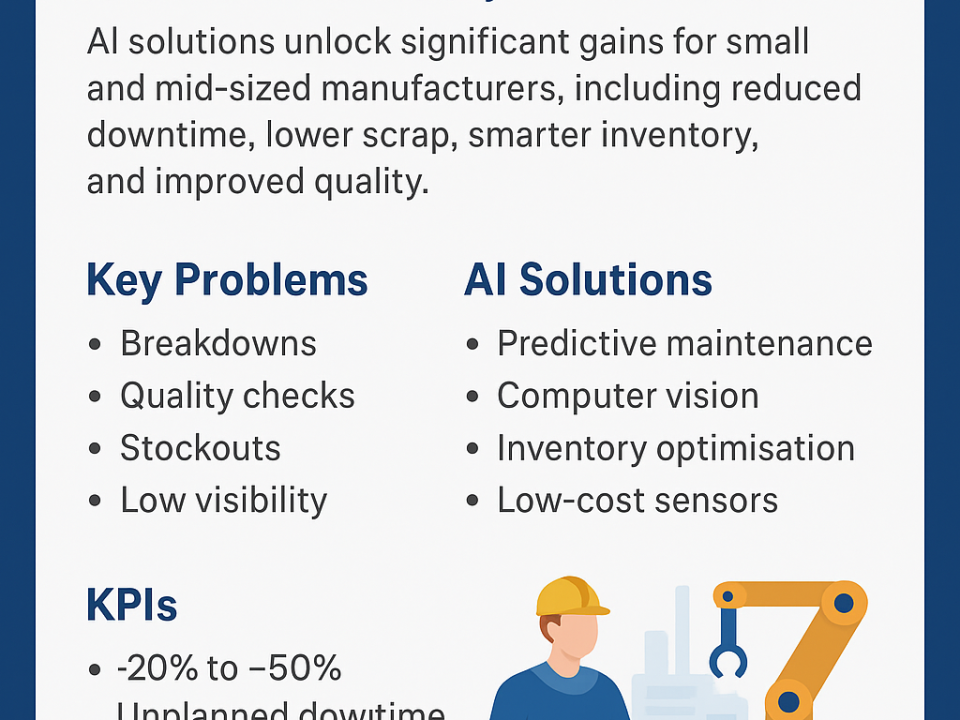NexaSight Vision Analytics Dashboard for Senior Living Facilities (US)

AI for SME Manufacturing: How Small Producers Are Becoming Smart Factories
October 15, 2025
“How AI Dashboards Change Efficiency — NexaSight”
October 30, 2025Senior living operators must balance resident safety, dignity, and operational efficiency. NexaSight delivers an AI-driven vision analytics dashboard tailored for senior living — providing fall detection & verification, people-flow and occupancy insights, staff optimization signals, and customizable KPIs — while supporting HIPAA-aware deployment models. Early adopter evidence shows AI reduces response times and helps avoid unnecessary hospitalizations.
The challenge
Senior living facilities face persistent operational and clinical pain points:
- Timely detection and assessment of resident falls (speed and accuracy matter).
- Managing staffing levels to match unpredictable demand peaks.
- Monitoring common-area occupancy, elopement risk, and room usage while preserving resident dignity.
- Demonstrating compliance and maintaining defensible audit trails for incidents.
Clinical studies and deployments show that automated vision and sensor systems can materially help with fall detection and activity profiling — provided privacy, accuracy and governance are addressed.
NexaSight solution overview
NexaSight is a modular platform combining edge processing, AI models, and a senior-living-focused dashboard:
- AI Fall Detection & Verification
- Computer-vision models identify falls and abnormal motion patterns, then attach short clips and metadata for rapid caregiver review (reduces false alarms and unnecessary emergency transfers).
- People & Occupancy Analytics
- Real-time counts, density heatmaps for communal spaces (dining, lobbies), and dwell-time metrics that drive layout and scheduling decisions.
- Staff Optimization & Shift Insights
- Correlates footfall and activity with care staffing levels to recommend dynamic staffing or trigger rapid redeployments.
- Custom KPI Dashboards
- Role-based views (executive, clinical, operations) with exportable reports and drilldowns: falls per 1,000 resident-days, average response time, occupancy %, staff-to-resident ratio, and incident verification rate.
- Privacy-first Architecture & Compliance Tools
- Edge-first processing, encrypted storage, redaction / blurred-room options, and logging features to help meet HIPAA and facility policies.
Roles & stakeholders
- Executive / Community Director: monitors occupancy, incident trends, and ROI metrics.
- Nursing & Clinical Leads: receive verified alerts and review incident clips to reduce unnecessary escalations.
- Operations / Staffing Managers: use heatmaps and dwell analytics to optimize shift patterns.
- IT & Compliance: configure retention, encryption, and access controls to align with HIPAA and state law.
- Residents & Families: benefit from faster response times and transparent reporting options (consent workflows where needed).
Implementation roadmap (typical pilot → scale)
- Weeks 0–2: Discovery & compliance scoping — map cameras, privacy zones, and required consents.
- Weeks 2–6: Pilot deployment — install edge nodes on 1–2 wings or common areas; run fall detection, people-count and occupancy dashboards.
- Weeks 6–12: Validate & refine — measure false-positive/negative rates, tune thresholds, and align workflows for caregiver response.
- Months 3–9: Scale & integrate — roll to other buildings, integrate with nurse call systems and EHRs as necessary.
Expected outcomes & KPIs (benchmarks)
- Faster verified response to falls — measurable reduction in time-to-assist and fewer unnecessary ED transports.
- Lower operational costs — better staff allocation can reduce overtime and improve coverage efficiency.
- Improved incident documentation — video-verified incidents reduce liability and support quality reviews.
- Resident wellbeing & engagement — optimized common-area usage and fewer interruptions from false alarms.
Note: exact results depend on environment, sensor coverage, and staff workflows; pilots commonly surface quick wins in weeks.
Compliance, privacy & ethics
Video in healthcare contexts is PHI when linked to an individual; NexaSight supports HIPAA-aware best practices: encrypting video at rest/in transit, strict role-based access, audit trails, consent workflows, and audio-disabled capture where required. Facilities should consult legal counsel and state rules; transparent family/resident communication is essential.
Risks & mitigations
- False alarms / alarm fatigue: combine AI with short-clip human verification and adaptive thresholds.
- Privacy concerns: adopt camera-free or depth/thermal alternatives where residents prefer (or blurred/edge-only processing).
- Integration complexity: phased integrations (nurse call → EHR) with clear ROI gating prevents scope creep.
NexaSight transforms passive video into operational and clinical intelligence — measured in faster responses, smarter staffing, and better resident outcomes. We recommend a scoped pilot in one building wing or common area to validate accuracy and ROI in 4–8 weeks.
To discuss a tailored NexaSight pilot for your community and review anonymized case study results, contact JW Infotech’s sales team.



